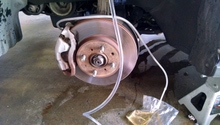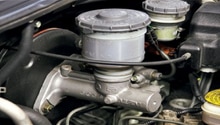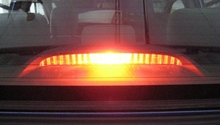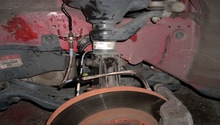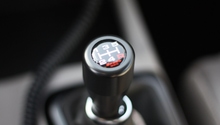Honda Civic: Why is My Brake Pedal Going to the Floor?
If your brake pedal is going to the floor then you need to find the problem soon. This is super dangerous and should be addressed as soon as possible. There are a few common issues that can be causing this sort of problem.
This article applies to the Honda Civic/Del Sol (1992-2000).
Stomping your brake pedal to the floor in order to stop your car is not normal. If you experience this, even once, it's a clear sign that there is an issue with your braking system. There are a hand full of problems that can cause this sort of issue. Here we will discuss the main culprits and help you figure out why this problem is occurring.
Step 1 - Your master cylinder could be failing
The most common issue causing this sort of problem, in an older Honda, is the master cylinder beginning to fail. Master cylinders don't last forever, so if you haven't replaced your,s nor remember if it has ever been replaced then don't be too surprised if this is the root of your problem. If your brake pedal is functioning normal, then immediately afterward the brake pedal has to be stomped almost to the floor to ensure the usual braking power, then after that resumes back to normal, then your master cylinder is failing. The reason behind this is because the seals are beginning to wear out in the master cylinder. This causes it to not be able to hold pressure at times. The occasional pressure loss is one of the symptoms. Your pedal needing to go to the floor is a loss of pressure in the system.
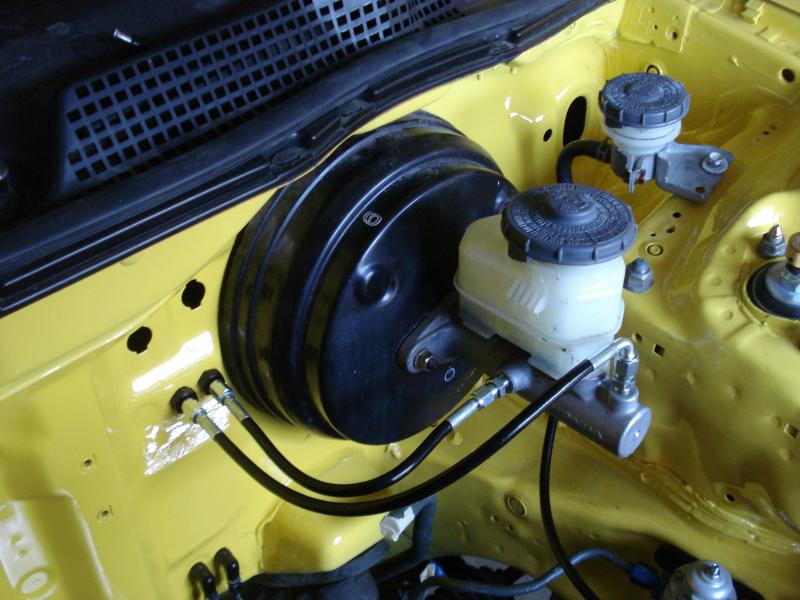
Pro Tip
Replacing your master cylinder is not a beginner's DIY, so be prepared to find a trustworthy mechanic.
If your master cylinder is new then the problem is elsewhere.
Step 2 - You could have a brake fluid leak
Loss of brake pedal pressure could also be a sign that you are leaking brake fluid. You can tell if this is your problem if you notice the brake reservoir continually getting low in brake fluid. In addition, you will should inspect your car for brake fluid leaks. The most common areas for brake fluid leaks are behind the brake pedal and around the wheels. If this is the case you want to get your brake system inspected to find out where the leak is coming from. It could be coming from a number of places. Brake lines eventually leak.

Pro Tip
Your car has a complex system of hard and soft brake lines, so if there is a leak it might take some time to pin point.
If you don't have a brake fluid leak, continue on.
Step 3 - You could have air in your brake system
Another cause of a brake pedal going to the floor is air in the brake system. Air getting in the brake system can be a common occurrence when doing a brake fluid flush. It happens by accident and even seasoned pros can make this mistake. If you recently had a brake fluid flush then you might want to double check that you or your mechanic didn't leave air in the brake system accidentally. You can have the system flushed out, carefully, this time around.
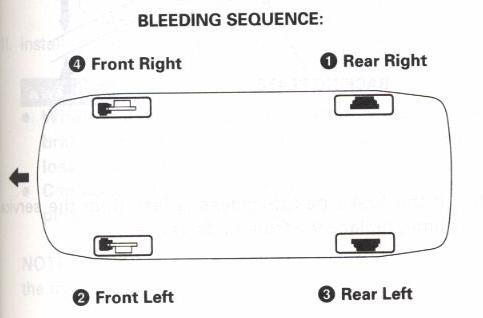
Pro Tip
Bleeding your brakes is also a non beginner's DIY. Make sure you know what your doing before you start.
(Related Article: How to Bleed Your Brakes - Honda-Tech.com)
Step 4 - Your brakes could have overheated
Lastly, your brakes could have just momentarily overheated. This most commonly occurs if you were going down a mountain hill for an extended period of time, while using the brakes heavily. If you did this, then you probably noticed that your brake pedal wasn't responding as well as it normally does. If you realize that this happens after cruising down a mountain hill then all you need to do is let your brakes cool down and they will resume working back to their usual self.
Pro Tip
If going down mountain hills is part of your weekly routine then you can eliminate this problem by installing a stronger brake pad compound. Another common way to curb overheated brakes is to use stainless steel brake lines and a higher quality brake fluid.
Related Discussions
- Bad master cylinder - Honda-Tech
- No Brake Pedal - Honda-Tech

